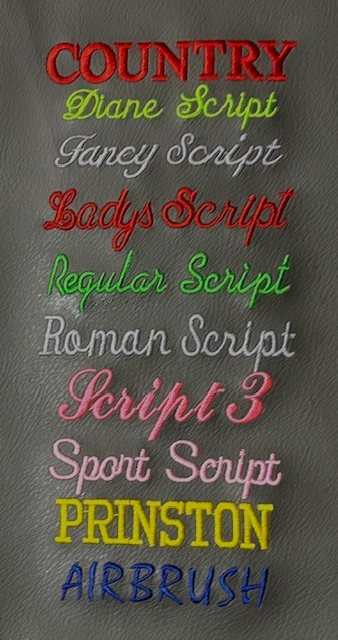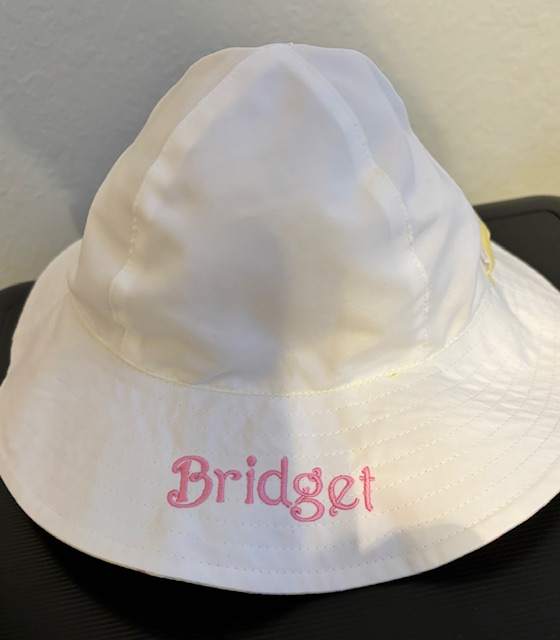Heat Transfer on T-Shirts and Aprons - Custom Styles and Logo Designs
Heat Transfer on T-Shirts and Aprons - Custom Styles and Logo Designs
Blog Article
The Art of Custom Needlework: Opening the Keys to Creating Unique and Memorable Styles
The tricks to developing personalized embroidery designs that mesmerize the eye and leave an enduring impression lie in a fragile balance of strategy, creativity, and interest to detail. As we dive into the world of custom-made needlework, we uncover the nuanced interaction in between string choice, stitch complexity, and style personalization that boosts a simple garment to a work of art.
Selecting the Right Embroidery Threads
When selecting needlework threads, what essential factors should you consider to guarantee the most effective outcomes for your customized styles? The selection of embroidery string is essential in figuring out the last end result of your embroidered design. One of the key factors to consider is the product of the thread. Different products such as cotton, polyester, rayon, and silk use varying levels of sheen, resilience, and texture. It is vital to select a string material that enhances the material you are embroidering on and aligns with the wanted look of the layout.
Additionally, the weight or density of the thread plays a significant role in the appearance of the embroidery. Thicker strings can add measurement and structure to your style, while finer threads are ideal for detailed information and small text. In addition, taking into consideration the shade fastness and washability of the string is vital to make sure that your custom styles preserve their high quality and vibrancy with time. By meticulously evaluating these aspects and selecting high-quality threads that fulfill your details needs, you can improve the aesthetic allure and durability of your embroidered creations.
Discovering Various Stitch Methods
To explore the realm of 'Discovering Different Stitch Strategies', one have to understand the details and subtleties that each stitching approach gives the art of needlework. Different stitch methods not only add visual rate of interest yet additionally add to the overall appearance and measurement of the design. One preferred stitch method is the satin stitch, which entails carefully stuffed parallel stitches to create a smooth and shiny surface area, perfect for completing forms and developing strong lays out.
On the other hand, the backstitch is a flexible method commonly utilized for outlining and adding fine details. It involves stitching in reverse to produce a strong line of needlework. Furthermore, the French knot stitch adds a tactile aspect to designs, perfect for creating distinctive accents like blossom facilities or ornamental touches.
Exploring various stitch techniques allows embroiderers to have fun with light, darkness, and deepness within their designs, boosting the visual allure and artistic high quality of their embroidery jobs. By understanding numerous stitching methods, one can unlock countless possibilities for developing one-of-a-kind and remarkable customized needlework items.
Incorporating Personalized Design Components
Having explored the details of different stitch strategies such as the satin stitch, backstitch, and French knot, the emphasis now moves in the direction of incorporating customized style elements in personalized embroidery jobs. Personalized design aspects play a vital function in making embroidery tasks really special and memorable. One method to include customization is by adding initials, names, or considerable days to the style. This not just includes a customized touch yet likewise enhances the emotional worth of the embroidery item.
An additional method to incorporate personalized style components is by including symbols or themes that hold special significance to the recipient or mirror their passions and personality. For instance, integrating a favored flower, pet, or hobby-related sign can make the needlework design extra purposeful and other tailored. Furthermore, picking colors that reverberate with the recipient or straighten with the suits and tailoring designated style can further enhance the customization of the needlework task.
Grasping the Art of Color Coordination

One secret facet of color coordination is understanding shade concept. This consists of knowing exactly how various shades connect with each other, the emotions they convey, and how they can be integrated to produce visually enticing layouts. By using color theory principles, embroiderers can develop unified color combinations that enhance the general look of the style.
Additionally, taking notice of contrast is essential in color sychronisation. Making use of contrasting colors can assist specific aspects of the layout pop, boost clarity, and create an aesthetically that site dynamic needlework item. By understanding the art of shade coordination, embroiderers can elevate their layouts and produce remarkable items that resonate with customers and viewers alike.
Enhancing Texture With Advanced Needlework Stitches

Bullion knots, on the various other hand, can be made use of to develop twisted, ropelike aspects that add a glamorous feeling to the embroidery. Experimenting with these advanced embroidery stitches permits you to push the boundaries of typical needlework and create really special and visually attractive structures in your designs.
Conclusion
To conclude, the art of custom-made embroidery entails a combination of selecting the appropriate strings, exploring various stitch techniques, including individualized layout aspects, grasping shade sychronisation, and boosting texture with sophisticated stitches. By understanding and applying these essential components, embroiderers can develop unique and remarkable styles that showcase their creative thinking and skill. Embroidery fanatics can open the tricks to producing lovely and custom items that stand apart and leave a lasting perception.
Report this page